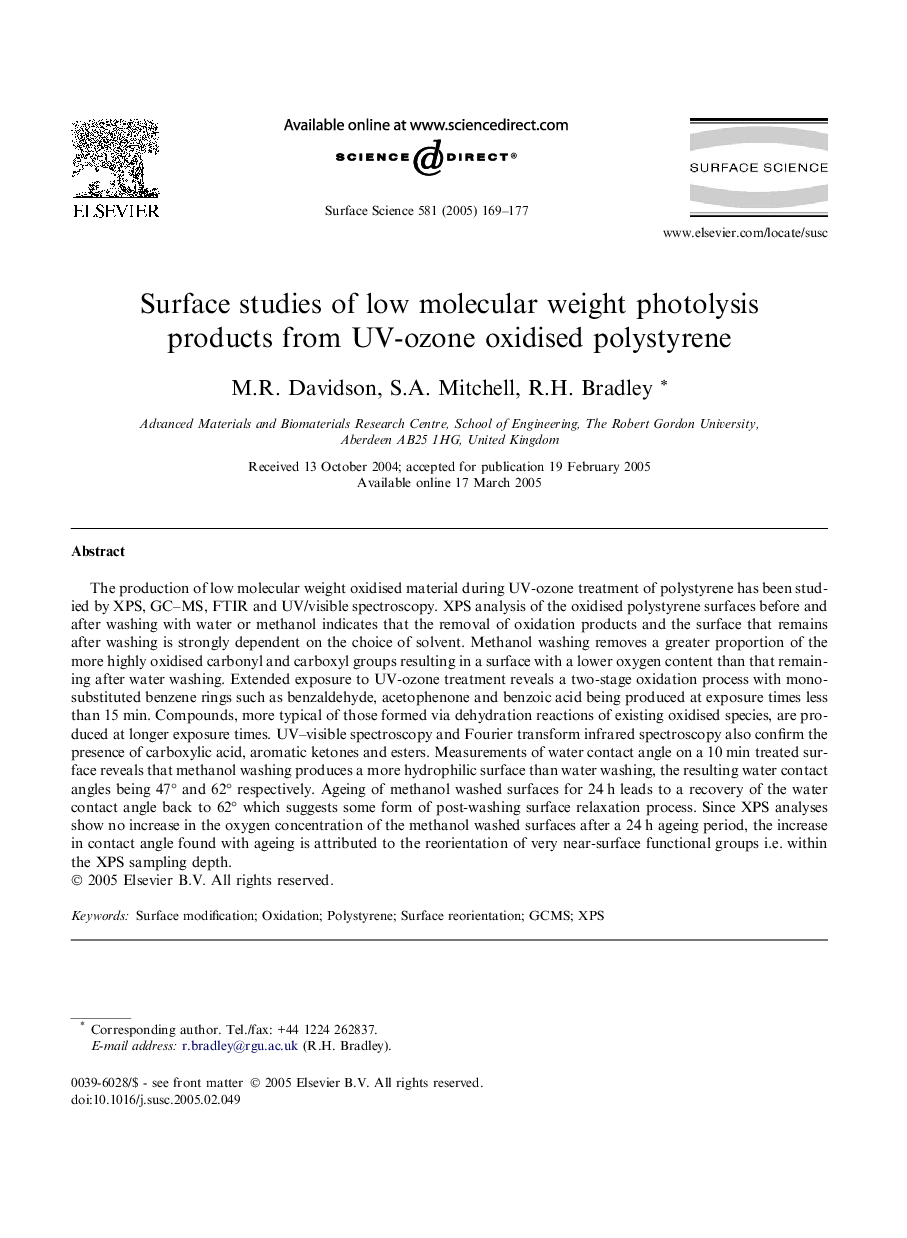| Article ID | Journal | Published Year | Pages | File Type |
|---|---|---|---|---|
| 9594938 | Surface Science | 2005 | 9 Pages |
Abstract
The production of low molecular weight oxidised material during UV-ozone treatment of polystyrene has been studied by XPS, GC-MS, FTIR and UV/visible spectroscopy. XPS analysis of the oxidised polystyrene surfaces before and after washing with water or methanol indicates that the removal of oxidation products and the surface that remains after washing is strongly dependent on the choice of solvent. Methanol washing removes a greater proportion of the more highly oxidised carbonyl and carboxyl groups resulting in a surface with a lower oxygen content than that remaining after water washing. Extended exposure to UV-ozone treatment reveals a two-stage oxidation process with mono-substituted benzene rings such as benzaldehyde, acetophenone and benzoic acid being produced at exposure times less than 15 min. Compounds, more typical of those formed via dehydration reactions of existing oxidised species, are produced at longer exposure times. UV-visible spectroscopy and Fourier transform infrared spectroscopy also confirm the presence of carboxylic acid, aromatic ketones and esters. Measurements of water contact angle on a 10 min treated surface reveals that methanol washing produces a more hydrophilic surface than water washing, the resulting water contact angles being 47° and 62° respectively. Ageing of methanol washed surfaces for 24 h leads to a recovery of the water contact angle back to 62° which suggests some form of post-washing surface relaxation process. Since XPS analyses show no increase in the oxygen concentration of the methanol washed surfaces after a 24 h ageing period, the increase in contact angle found with ageing is attributed to the reorientation of very near-surface functional groups i.e. within the XPS sampling depth.
Related Topics
Physical Sciences and Engineering
Chemistry
Physical and Theoretical Chemistry
Authors
M.R. Davidson, S.A. Mitchell, R.H. Bradley,
